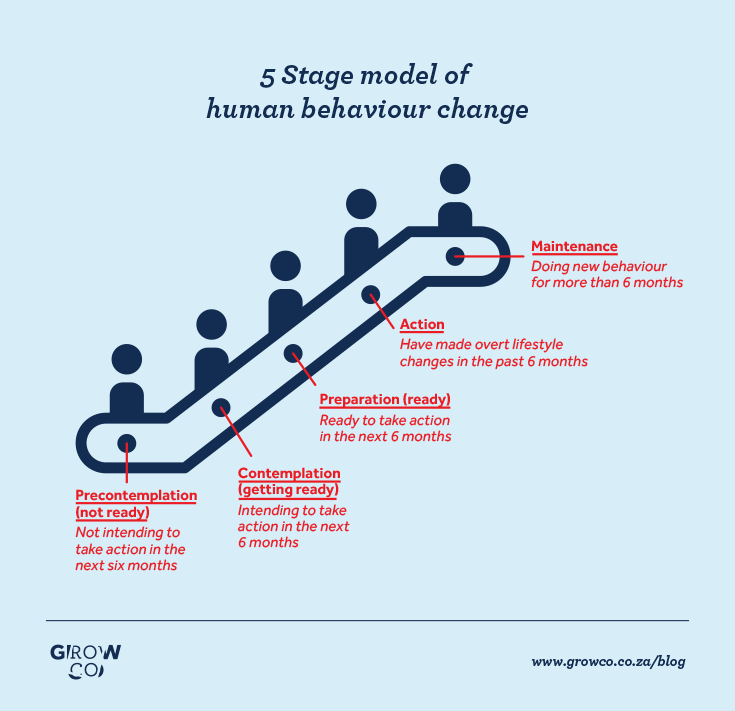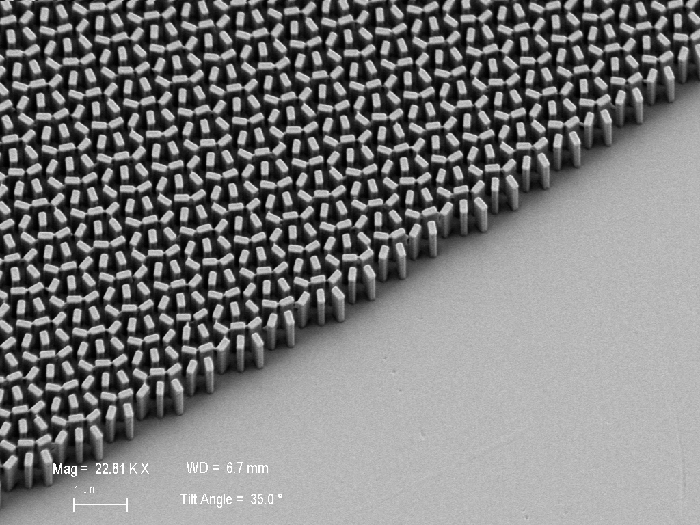Energy-efficient air conditioning is rapidly becoming a crucial component of sustainable HVAC solutions as global temperatures continue to climb. With traditional air conditioning systems contributing to up to 4 percent of greenhouse gas emissions, innovative cooling technology is urgently needed to mitigate environmental impacts. A promising answer comes from Trellis Air, a Harvard startup that has developed an advanced dehumidification system that operates more like a coffee filter than a conventional AC unit. This pioneering approach not only enhances efficiency but also reduces energy consumption, addressing the projected 40 percent increase in cooling demands by 2030. By incorporating groundbreaking science and engineering, Trellis Air is poised to transform the air conditioning industry and provide a more energy-efficient solution for our warming world.
As the need for effective cooling solutions escalates, alternate phrases such as “energy-efficient cooling systems” or “sustainable air conditioning technologies” encapsulate the growing focus on eco-friendly practices. These emerging systems aim to address the challenges posed by climate change while maintaining comfort in our living and working environments. Innovations like the cutting-edge dehumidification methods developed by Trellis Air represent a significant shift in how we approach indoor climate control. By harnessing state-of-the-art technology, including specialized membranes for moisture extraction, these solutions not only optimize air conditioning functionality but also contribute to a greener future. Through such advancements, the HVAC industry is evolving into a landscape characterized by sustainability and efficiency.
Understanding Energy-Efficient Air Conditioning
Energy-efficient air conditioning is rapidly becoming a crucial aspect of sustainable building practices. Traditionally, air conditioning systems not only consume a significant amount of energy but also contribute to greenhouse gas emissions, thereby exacerbating climate change. By focusing on developing innovative cooling technologies that minimize energy usage, we can dramatically reduce the environmental impact of cooling systems. This shift is essential as demand for cooling is predicted to surge significantly in the coming years.
One notable innovation in this domain is Trellis Air’s groundbreaking membrane technology, designed to operate with remarkably lower energy requirements. Unlike traditional air conditioning units that rely heavily on vapor-compression methods, Trellis Air employs a dehumidification system that efficiently removes moisture from the air using a unique membrane akin to a coffee filter. This innovative approach not only enhances energy efficiency but also addresses the drying process, which is vital for effective cooling without excessive power consumption.
The Role of Innovative Cooling Technology in Combating Climate Change
Innovative cooling technologies are at the forefront of efforts to combat climate change. As the global temperature rises, air conditioning becomes increasingly necessary, yet conventional systems are inefficient and highly polluting. The integration of sustainable HVAC solutions, such as Trellis Air’s technology, represents a paradigm shift in how we approach climate control in buildings. By leveraging advanced materials and engineering, these technologies create a path towards energy-efficient cooling that meets both environmental and market demands.
Furthermore, innovative cooling solutions are not limited to residential use; they are pivotal in industrial applications where managing microclimates is crucial. Trellis Air’s approach, which allows for capturing and dehumidifying air efficiently, can replace outdated, energy-hungry systems currently used in many sectors. As we push towards zero-carbon infrastructure, investing in and embracing these advanced HVAC approaches will be essential in reducing overall energy consumption.
The Innovation Behind Trellis Air’s Dehumidification System
Trellis Air embodies a significant technological breakthrough in HVAC solutions. The startup, stemming from years of research at Harvard, utilizes a specially designed membrane to facilitate the dehumidification process, using far less energy than conventional methods. This innovation not only reduces energy consumption but also aims at a lower carbon footprint, aligning with global targets for sustainability. The team’s emphasis on creating a scalable and efficient solution underscores the importance of marrying scientific research with practical engineering.
The development of Trellis Air’s technology reflects a broader trend of seeking efficiency in building systems. By pioneering a method that allows air to be cooled and dried simultaneously, this approach offers a compelling alternative for both consumers and industries looking to lower their energy usage. Such advancements represent not just a technological evolution but also lay the groundwork for integrating sustainable practices in future HVAC designs, ensuring they are prepared to meet the challenges of a warming world.
Sustainable HVAC Solutions: A Necessity for the Future
Sustainable HVAC solutions are becoming indispensable as we consider the long-term impacts of climate change. With air conditioning demands expected to rise dramatically, innovating within this sector is critical. Sustainable technologies like the ones developed by Trellis Air not only promise reduced energy use but also serve as an essential response to increasing global temperatures and environmental degradation. As more companies begin to adopt these methods, the potential for a significant reduction in carbon emissions grows.
Additionally, the success of sustainable HVAC solutions hinges on the commitment to research and development in the field. As governments and businesses recognize the urgent need for action, initiatives to foster and support innovative technologies will take center stage. Trellis Air, being one such pioneer, demonstrates how effective collaboration between institutions can lead to advancements that are both economically viable and ecologically responsible. Such strides hold the key to creating HVAC systems that support a sustainable future.
The Impact of Harvard’s Research on Air Conditioning Technology
Harvard’s research and development in air conditioning technology have paved the way for revolutionary advancements in sustainable cooling methods. The collaboration between scientists and engineers at the university has culminated in the innovative solutions offered by Trellis Air, setting new standards for energy efficiency. This synergy not only enhances the field of HVAC but also emphasizes the role of academic institutions in addressing critical environmental issues through innovation.
The impact of such research extends beyond just technological improvements; it influences how the industry approaches sustainability. Harvard’s initiatives showcase the importance of marrying scientific insight with practical applications, establishing a blueprint that other institutions and startups can emulate. By championing research that drives change, we can inspire a new generation of energy-efficient air conditioning technologies that promise to reshape the future of our built environments.
Challenges in Developing Energy-Efficient Air Conditioning
Despite the promising innovations in energy-efficient air conditioning, several challenges persist in the development and adoption of these technologies. One of the main hurdles is overcoming the established practices within the HVAC industry, which often relies on traditional, energy-intensive methods. Convincing stakeholders to transition to newer, more sustainable options like Trellis Air’s membrane technology requires robust evidence of efficiency and cost-effectiveness.
Another challenge is the scalability of these innovative systems. While prototypes like those developed at Harvard show great potential, transitioning from proof-of-concept to widespread implementation involves significant investment and collaboration across various sectors. Addressing these challenges will be crucial for the success of emerging technologies and will require a collective effort from researchers, industry leaders, and policymakers to create an environment conducive to sustainable practices.
Real-World Applications of Trellis Air Technology
The practical application of Trellis Air technology in real-world settings reveals its efficacy as a sustainable cooling solution. Extensive field tests in diverse climates, such as the humid conditions in Miami, have demonstrated the system’s ability to efficiently dehumidify and cool air without the excessive energy consumption typical of traditional air conditioning units. This validation is crucial for gaining the confidence of potential investors and customers alike.
The implications of these applications extend beyond just immediate performance; they signal a shift towards embracing innovative HVAC solutions as standard practices. As buildings increasingly adopt Trellis Air technology, we can expect significant reductions in energy needs, leading to lower operating costs and a smaller carbon footprint. Such advancements not only improve environmental conditions but also enhance the quality of life for occupants through better indoor climates.
Future Implications of Innovative Cooling Solutions
As innovative cooling solutions like Trellis Air gain traction, the future landscape of buildings and their energy consumption appears optimistic. The potential to integrate such technology into existing infrastructures opens up numerous opportunities for reducing overall energy consumption on a global scale. Looking forward, this could lead to a substantial decrease in carbon emissions associated with air conditioning, supporting international efforts to combat climate change.
Additionally, as awareness and demand for sustainable solutions grow, the market for HVAC innovations is likely to expand. This could spur further research and development, which in turn may lead to even more impressive advancements in energy-efficient technologies. By investing in and adopting these pioneering solutions, we not only improve the efficiency of cooling systems but also inch closer to achieving sustainability goals across industries.
The Business Potential of Sustainable HVAC Innovations
The business potential surrounding sustainable HVAC innovations is vast and ripe for exploration. Trellis Air’s commitment to energy-efficient air conditioning solutions exemplifies the shift popular among consumers who increasingly prioritize sustainability. Companies that can showcase effective and environmentally friendly technologies stand to gain a competitive advantage in a marketplace that is becoming more aware of its ecological footprint.
Moreover, sustainability is often linked with cost savings over time, making a compelling case for businesses to invest in these advanced technologies. As energy prices fluctuate and climate policies become more stringent, the demand for efficient HVAC solutions like those provided by Trellis Air will likely increase. Recognizing this trend can offer significant opportunities for business growth, innovation, and leadership in the sustainable sector.
Frequently Asked Questions
What is energy-efficient air conditioning and why is it important?
Energy-efficient air conditioning refers to systems designed to cool indoor spaces while minimizing energy consumption, thus reducing greenhouse gas emissions. With traditional cooling solutions contributing significantly to global emissions, energy-efficient air conditioning is crucial for sustainable HVAC solutions and combating climate change.
How does the innovative cooling technology of Trellis Air work?
Trellis Air’s innovative cooling technology utilizes a unique membrane that functions like a coffee filter to extract moisture from the air while cooling it. This method uses significantly less energy than traditional air conditioning and dehumidification systems, making it a promising sustainable HVAC solution.
What are the benefits of using a dehumidification system in energy-efficient air conditioning?
A dehumidification system enhances energy-efficient air conditioning by removing excess moisture from the air, which not only improves comfort but also allows the cooling system to operate more effectively. Systems like Trellis Air utilize advanced methods for dehumidification that reduce energy use and improve air quality.
How does Trellis Air’s membrane compare to traditional air conditioning systems?
Unlike traditional air conditioning systems that rely heavily on refrigerants and consume large amounts of energy, Trellis Air’s membrane dehumidification technology offers a more energy-efficient alternative that minimizes greenhouse gas emissions. This innovative cooling technology aims to disrupt the current HVAC industry standards.
Why should I consider investing in energy-efficient air conditioning solutions?
Investing in energy-efficient air conditioning solutions, such as those developed by Trellis Air, not only reduces energy bills but also contributes to a more sustainable environment by lowering carbon footprints. As demand for cooling rises, energy-efficient systems are essential for sustainable HVAC solutions.
What role does the Harvard startup Trellis Air play in energy-efficient air conditioning?
Trellis Air, a Harvard startup, is pioneering energy-efficient air conditioning technology by employing a unique membrane that reduces energy requirements for cooling and dehumidification. Their innovative approach represents a significant shift towards sustainable HVAC solutions that address the growing demand for cooling.
How can Trellis Air technology improve commercial building air conditioning systems?
Trellis Air technology can enhance commercial building air conditioning systems by integrating a pre-drying module that increases efficiency and reduces energy consumption. This leads to lower operational costs and a smaller environmental impact, aligning with the industry’s shift towards energy-efficient solutions.
What are the future implications of energy-efficient air conditioning technology?
The development of energy-efficient air conditioning technology, particularly through innovations like Trellis Air’s membrane system, has the potential to reduce the energy demand associated with cooling significantly. This advancement is crucial to mitigate climate change and ensure sustainable HVAC solutions for the future.
How does climate change impact the need for energy-efficient cooling solutions?
Climate change leads to rising global temperatures, increasing the demand for cooling solutions. Energy-efficient air conditioning, such as that provided by Trellis Air’s innovative technology, becomes essential in managing this growing demand while reducing the associated rise in greenhouse gas emissions.
What funding and support has Trellis Air received for its innovative technology?
Trellis Air has received funding and support from various institutions, including the Department of Energy and Harvard’s Office of Technology Development. This backing has been instrumental in the commercialization of their energy-efficient air conditioning technology.
| Key Points |
|---|
| Researcher Peteris Lazovskis is involved with Trellis Air, focused on energy-efficient air conditioning solutions. |
| The demand for air conditioning is expected to rise by 40% by 2030 due to increasing global temperatures. |
| Trellis Air’s technology uses a special membrane to efficiently extract moisture from air, reducing energy consumption. |
| Traditional air conditioning systems have maintained the same technology for over 100 years, leading to significant emissions. |
| The prototype has been tested in real-world conditions, demonstrating its efficiency in hot climates. |
| Trellis Air is exploring multiple commercial pathways including improving existing industrial and residential dehumidifiers. |
Summary
Energy-efficient air conditioning is crucial as global temperatures continue to rise, with air conditioning demand projected to increase significantly by 2030. Trellis Air’s innovative membrane technology presents a solution to tackle this challenge by reducing energy consumption and greenhouse gas emissions associated with traditional cooling systems. By embracing new methods and technologies, we can create a more sustainable future, mitigating the impact of climate change.




